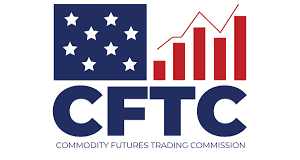
Soybean futures offer investors a way to trade on future soybean prices. Mini soybean futures contracts, which are smaller and more affordable, are becoming increasingly popular among individual traders.
Symbol for Soybean Futures:
The symbol for soybean futures varies depending on the exchange they are traded on. For example, on the Chicago Mercantile Exchange (CME), mini soybean futures are denoted by the symbol QM. It’s important to verify the correct symbol for your chosen exchange before initiating trades.
Understanding Soybean Futures:
Soybean futures are contractual agreements where the buyer commits to purchasing a specific quantity of soybeans at a predetermined price on a future delivery date. These contracts are used by farmers, food companies, and investors to manage price fluctuations in the soybean market.

Factors Influencing Soybean Futures:
The prices of soybean futures are subject to a variety of factors, each playing a crucial role in shaping market trends:
-
Supply and Demand Dynamics:
The interplay between supply and demand for soybeans is a primary driver of futures prices. Factors such as shifts in consumer preferences, changes in population demographics, and evolving dietary trends can significantly impact demand. Similarly, fluctuations in agricultural productivity, storage capacities, and transportation logistics influence supply dynamics.
-
Weather Conditions and Crop Yields:
Soybean yields are highly sensitive to weather conditions throughout the growing season. Factors such as temperature variations, precipitation levels, and the incidence of extreme weather events (e.g., droughts, floods, and hurricanes) can directly impact crop yields. Adverse weather conditions may lead to yield reductions, supply shortages, and subsequent price fluctuations in the futures market.
-
Global Economic Conditions:
The state of the global economy plays a pivotal role in determining soybean futures prices. Economic indicators such as GDP growth rates, inflation levels, and currency exchange rates influence global demand for soybeans. Additionally, macroeconomic events, geopolitical tensions, and trade agreements between nations can introduce volatility and uncertainty into the futures market.
-
Government Policies and Trade Regulations:
Government interventions, trade policies, and regulatory measures exert a significant influence on soybean futures prices. Subsidies, tariffs, import/export quotas, and agricultural support programs implemented by governments can directly impact the competitiveness of soybean markets. Changes in trade agreements, sanctions, and diplomatic relations between countries may also disrupt supply chains and alter market dynamics.

Margin Requirements for Soybean Futures:
Margin requirements play a pivotal role in soybean futures trading, providing traders with the necessary financial safeguards and risk management tools.
Here’s what you need to know:
-
Variability Across Exchanges:
Margin requirements for soybean futures trading can vary significantly across different exchanges and contract specifications. Each exchange establishes its own margin rules, taking into account factors such as market volatility, contract size, and trading activity. Traders should familiarize themselves with the specific margin requirements of their chosen exchange and contracts before engaging in trading activities.
-
Risk Mitigation:
Margin funds serve as a form of collateral, enabling traders to cover potential losses arising from adverse price movements in the futures market. By depositing margin funds into their trading accounts, traders demonstrate their financial capacity to honor contractual obligations and mitigate counterparty risk. Margin requirements ensure that traders maintain a minimum level of financial solvency, thereby safeguarding the integrity and stability of the futures market.
-
Covering Potential Losses:
Margin funds act as a financial cushion against adverse price fluctuations, allowing traders to absorb temporary losses without triggering margin calls or liquidation events. In the event of unfavorable market conditions, margin funds provide traders with the liquidity needed to meet margin calls and sustain their trading positions. By maintaining adequate margin levels, traders can effectively manage risk and preserve their capital in dynamic market environments.
-
Transparency and Accountability:
Exchange regulations mandate transparent reporting and monitoring of margin requirements to ensure market integrity and investor protection. Traders are required to maintain sufficient margin levels in their accounts at all times, thereby promoting financial accountability and risk awareness within the trading community. Margin requirements serve as a fundamental pillar of market regulation, fostering confidence, liquidity, and stability in the soybean futures market.
Soybean Futures Quotes:
Accessing soybean futures quotes is essential for traders to stay informed and make informed decisions in the dynamic futures market, such as:
-
Availability and Accessibility:
Soybean futures quotes are widely accessible on various financial websites and trading platforms. These platforms provide real-time updates on soybean futures prices, bid prices, ask prices, and the spread between them. Traders can conveniently monitor market fluctuations and identify trading opportunities from any internet-enabled device.
-
Key Information Provided:
Soybean futures quotes furnish traders with critical market data essential for decision-making. Current soybean futures prices reflect the latest market valuations, enabling traders to gauge price trends and market sentiment. Bid prices represent the maximum price buyers are willing to pay for soybean futures contracts, while ask prices denote the minimum price sellers are willing to accept. The spread between bid and ask prices indicates market liquidity and trading activity, influencing price dynamics and order execution.
-
Utilizing Quotes for Analysis:
Traders can leverage soybean futures quotes to conduct technical analysis and formulate trading strategies. Charting tools and indicators available on trading platforms enable traders to identify patterns, trends, and support/resistance levels in soybean futures prices. By analyzing historical price data and monitoring market sentiment reflected in quotes, traders can make informed decisions and capitalize on trading opportunities in the soybean futures market.
-
Integration with Trading Platforms:
Many trading platforms offer advanced features and customization options for displaying soybean futures quotes. Traders can personalize their trading interfaces, set price alerts, and access real-time news and market analysis to enhance decision-making and stay ahead of market developments. Seamless integration between quotes and trading platforms streamlines order execution and portfolio management, empowering traders to execute trades efficiently and optimize their trading performance.
Contract Specifications:
Soybean futures contracts have specific specifications, including contract size, expiration date, and delivery terms. Traders should understand these specifications to mitigate risks associated with trading soybean futures contracts.
Frequently Asked Questions (FAQs) Related to Soybean Futures:
What are soybean futures?
Soybean futures are financial derivatives allowing traders to speculate on future soybean prices through predetermined agreements to buy or sell soybeans at specified prices and dates.
What factors influence soybean futures prices?
Soybean futures prices are influenced by factors such as increased demand, limited availability, adverse weather conditions, and economic growth in exporting countries.
Where can I find soybean futures price details?
Soybean futures price details can be found on various financial websites and trading portals, providing information on futures prices, bid prices, and ask prices.
See Our – Why use an Automated Trading System ATS
See Our Limited Time “Promo Offer” and see how you can become our Client!














